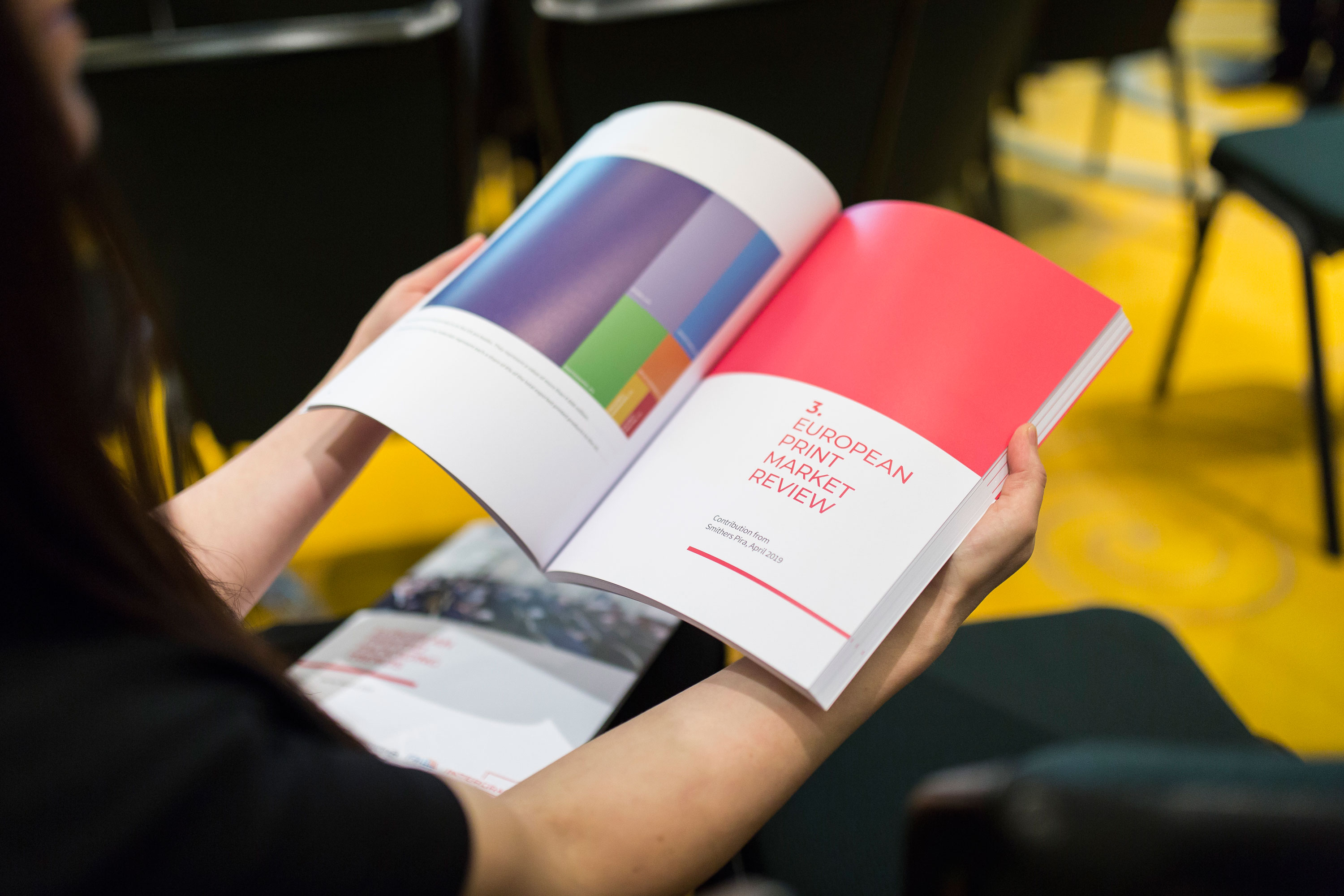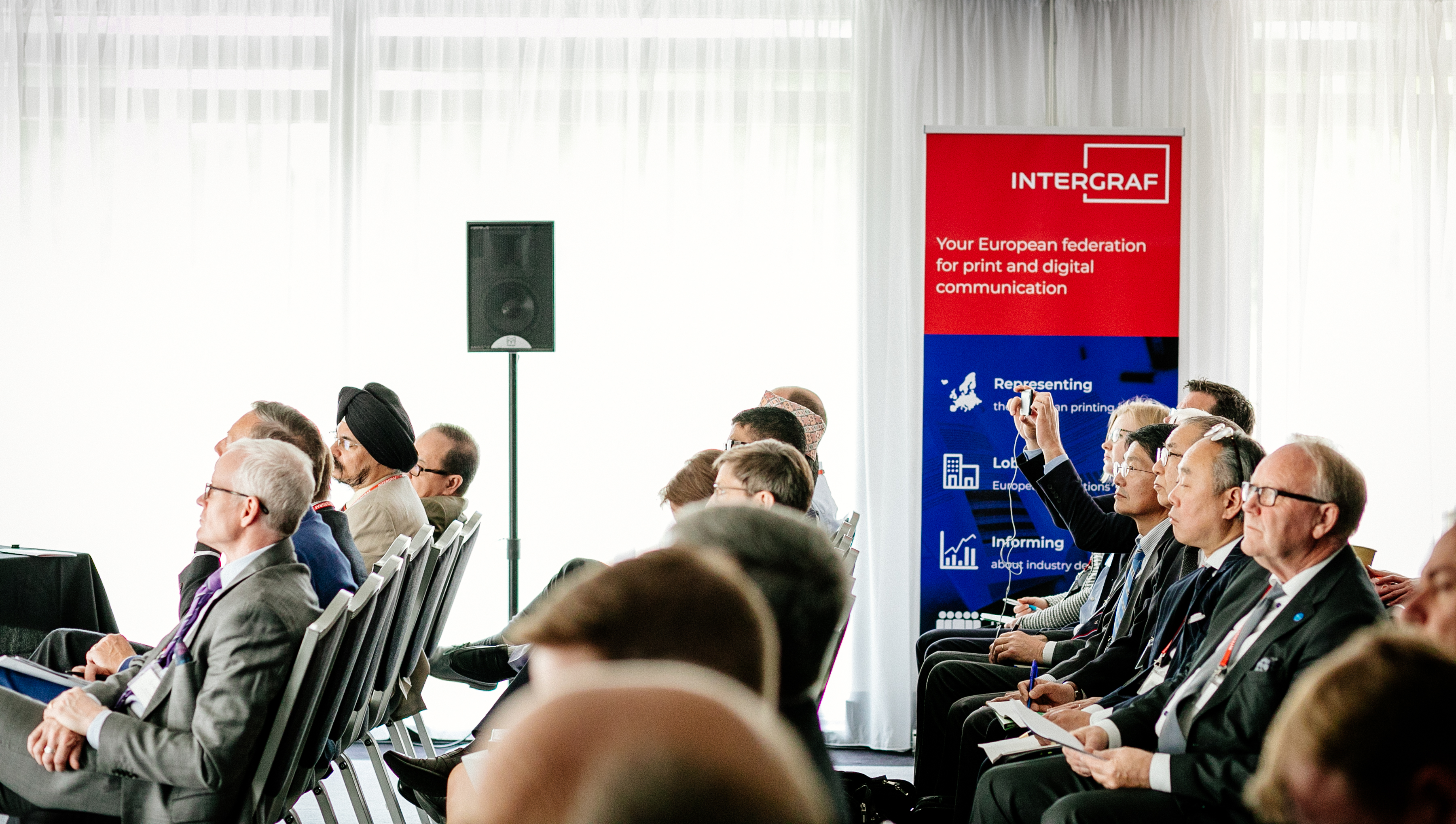Print’s place in the communications mix: Interview with Dominic Lyle, Director General of the EACA
5 April 2017
Print’s place in the communications mix: Interview with Dominic Lyle, Director General of the EACA
{K2Splitter} One of the key challenges for printers in today’s diverse market is to establish where print fits into the advertising and communications mix. Few are better placed to offer such insights than Dominic Lyle, Director General of the European Association of Communications Agencies (EACA).
One of the key challenges for printers in today’s diverse market is to establish where print fits into the advertising and communications mix. Few are better placed to offer such insights than Dominic Lyle, Director General of the European Association of Communications Agencies (EACA).
The EACA represents approx. 2.500 communications agencies from 30 countries and employs 120.000 people. Director General since 2002, Dominic uses his industry expertise and the diverse insights of the EACA’s membership, to give us his unique perspective on advertising and communications in Europe.
Dominic will present at Intergraf’s ‘Print Matters for the Future!’ conference in Copenhagen on 9th June. Contact Alison Grace or visit our event page to find out more and/or secure your place at the conference now! This email address is being protected from spambots. You need JavaScript enabled to view it..
What do you do at the European Association of Communications Agencies?
I am Director General, overseeing a team of 7. Our main activities are: (1) representing our members through advocacy at EU level, (2) providing education and training, (3) rewarding innovative advertising campaigns in award ceremonies, and (4) providing our members with information and knowledge.
What are the challenges that face the advertising and communications sector in 2017 and beyond? What are the main concerns of your members?
The main challenge is adjusting to a completely digital environment, which is a complicated process. One of the obstacles to this is to find the balance between privacy and transparency. There has been a push from advocacy groups desiring more transparency, although communications agencies can sometimes struggle to adequately measure and report back to their clients on privacy issues. Other concerns include the ‘viewability’ of digital advertising (how much do you see and for how long?), brand safety online, ad-blocking, fraud and remuneration for work. European Commission legislation is also making interest-based advertising based on your online behaviour harder, although EACA members see this as the future.
What is effective advertising today?
It is the same as it has always been: advertising that can be proven to have achieved the objectives that were set at the beginning. Only the methods have changed.
How would you assess the current pace of change in the industry? How can companies keep up with this and what are the most crucial future trends?
The pace of change in the industry is speeding up because of technology. Artificial intelligence, for example, is just starting to be taken seriously and this will increase, unlike the ‘flash in the pan’ trend of virtual reality. The trend towards mobile advertising is also still strong, with 75-80% of all online communications recently projected to be through mobile. I also see more and more ‘virtual agencies/teams’ being created to work on one ad campaign before being dissolved, although small start-ups continue to dominate the sector.
What are the EACA’s main EU policy issues and priorities for 2017?
The E-Privacy Directive, the new General Data Protection Regulation (GDPR), and the Audiovisual Media Services Directive are our main policy issues right now; we want to achieve the best possible results we can from the E-Privacy and the AV Directives. In particular, some aspects of the E-Privacy Directive currently contradict the GDPR, although it’s not supposed to, so we want this to be fixed. We’re also focused on combatting unfair business practices and on initiatives related to brand safety. In addition to all of this, we will soon be launching an initiative on European viewability standards with IAB Europe (Interactive Advertising Bureau Europe), which introduces a certifiable minimum standard for ad viewability online.
Where does print fit into the advertising and communications mix? Have you seen this changing? How?
Print is important; the problem is often in the mediums that deliver it. Magazines, for example, have suffered because more people go online for information. This doesn’t mean, however, that print must be a declining channel. There are plenty of examples of very innovative print usages so printers need to look forward. There’s a lot of potential but the industry needs to prepare itself for big shifts in the future.
What advice do you have for printers in this dynamic industry?
Look at advertising and you can see where things are going: i.e. more interactive, user-friendly and offering a better user-experience.
What are the threats to print media in advertising?
There are some great examples of innovative print campaigns, like using print to link to mobile ads, but they’re not common enough. The biggest threat is that the print industry doesn’t always take full advantage of new media technologies. It’s also the case that agencies don’t always prioritise print. Printers could potentially jump over agencies and go straight to the advertisers, who are often more receptive to print solutions than agencies who want digital.
What will you be speaking about at our ‘Print Matters for the Future?’ conference in June?
I will explain what is happening in the industry – trends, future outlook, etc. – before mapping where print fits into that process.






